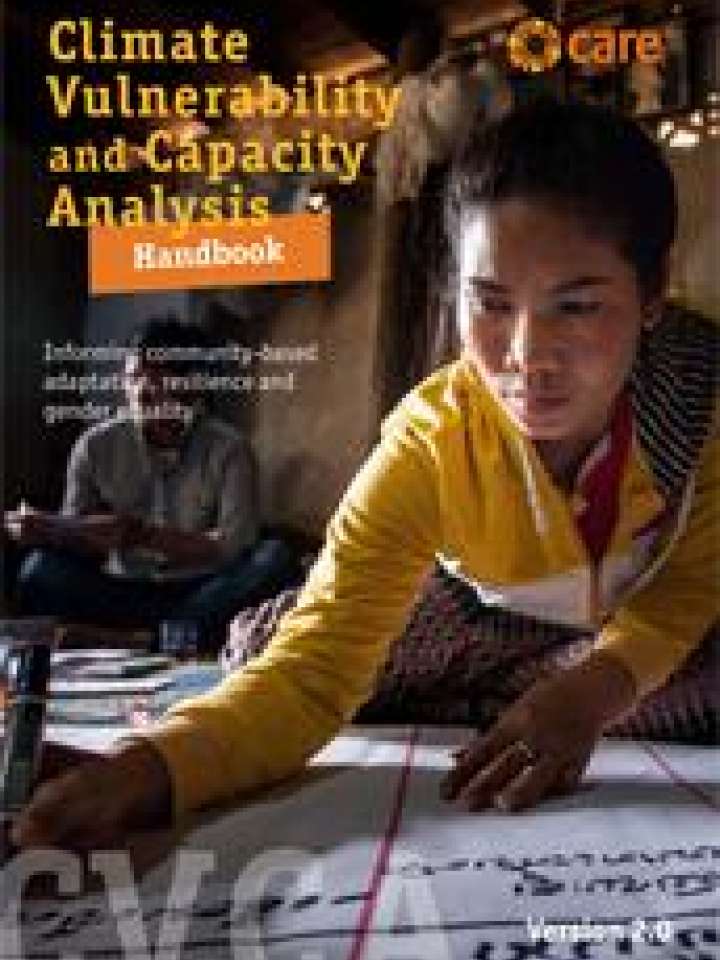Climate vulnerability and capacity analysis handbook: 2nd edition
The Climate Vulnerability and Capacity Analysis (CVCA) is a tool used to gather and analyze information on community-level vulnerabilities to and capacities for climate change. It informs the identification of actions, at the community level or more broadly, that support communities in increasing their resilience to climate change.
CARE’s Climate Vulnerability and Capacity Analysis (CVCA) Handbook was first developed in 2009, at a time when humanitarian and development actors were beginning to think more seriously about climate change and how it would affect their efforts to support communities in realizing their aspirations to get out of poverty. Recognizing the context-specificity of climate impacts, as well as the socioeconomic dimensions of climate change adaptation, the CVCA Handbook was developed to guide practitioners in analyzing vulnerability to climate change and adaptive capacity at the community level. Since then, the CVCA Handbook has been applied by CARE and its partners, as well as other non-governmental organizations (NGOs), governments and researchers, in communities around the world.
Ten years on, much has been learned about adaptation and resilience building, as well as about the CVCA process itself. The context has also evolved. CARE has developed its approach to increasing resilience which builds on experience implementing projects focusing on community-based adaptation, disaster risk reduction, and food and nutrition security, among other issues. This updated handbook aims to integrate these learnings with a particular focus on gender, ecosystems and governance to be specifically considered in all steps of the CVCA. The CVCA process considers the potential negative impacts of climate change on gender equality, ecosystems and governance, as well as how their status influences people’s resilience. By including these as cross-cutting issues for the process, the CVCA process can provide a basis for taking an integrated approach, including options that create positive change in relation to these issues, while also increasing climate resilience.
Explore further
